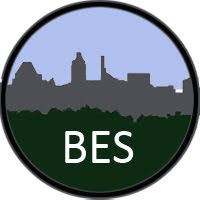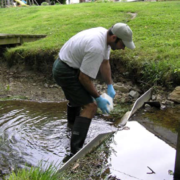Watershed Studies
Brief description
The watershed approach, i.e. monitoring inputs and hydrologic outputs of nutrients, has long been fundamental in ecosystem ecology, and is an important component of many sites in the National Science Foundation (NSF) Long Term Ecological Research (LTER) network. This approach provides information on whole ecosystem function and how this responds to environmental change. The watershed approach also produces data relevant multiple water quality issues.

Why is it important to people’s lives?
There is great interest in the quality of water the drains out of Baltimore City and County into Chesapeake Bay. Results from our studies are relevant to multiple efforts to improve water quality, including new Total Maximum Daily Load (TMDL) regulations and efforts to make Baltimore Harbor fishable an swimmable by 2020.
How does this research improve people’s lives?
In a general sense, BES watershed studies contribute to assessing and improving the water the passes through the places where they live and that drains to the adjacent Chesapeake Bay. More specifically, our ata help efforts to address specific state and federal regulations and agreements relating to water quality.
How do we do it?
The BES long-term stream sampling network includes four longitudinal sampling sites along the Gwynns Falls as well as four small (40 – 100 ha) watersheds located within or near to the Gwynns Falls. The longitudinal sites provide data on water and nutrient fluxes in the different land use zones of the watershed (rural/ suburban, rapidly suburbanizing, old suburban, urban core) and the small watersheds provide more focused data on specific land use areas (forest, agriculture, rural/suburban, urban). Each of the gaging sites is continuously monitored for discharge by the USGS and is sampled weekly for chemistry. Water quality analysis includes major nutrients (inorganic and organic forms), total suspended solids, temperature and dissolved oxygen. Data are used to compute input-output budgets. All streamflow and chemistry data are posted on the BES website (baltimoreecosystemstudy.org).
Results have shown significant potential for biogeochemical processing, retention and purification of water and that this processing is strongly influenced by climatic variation and change and by efforts to control stormwater and repair sanitary sewer infrastructure.





